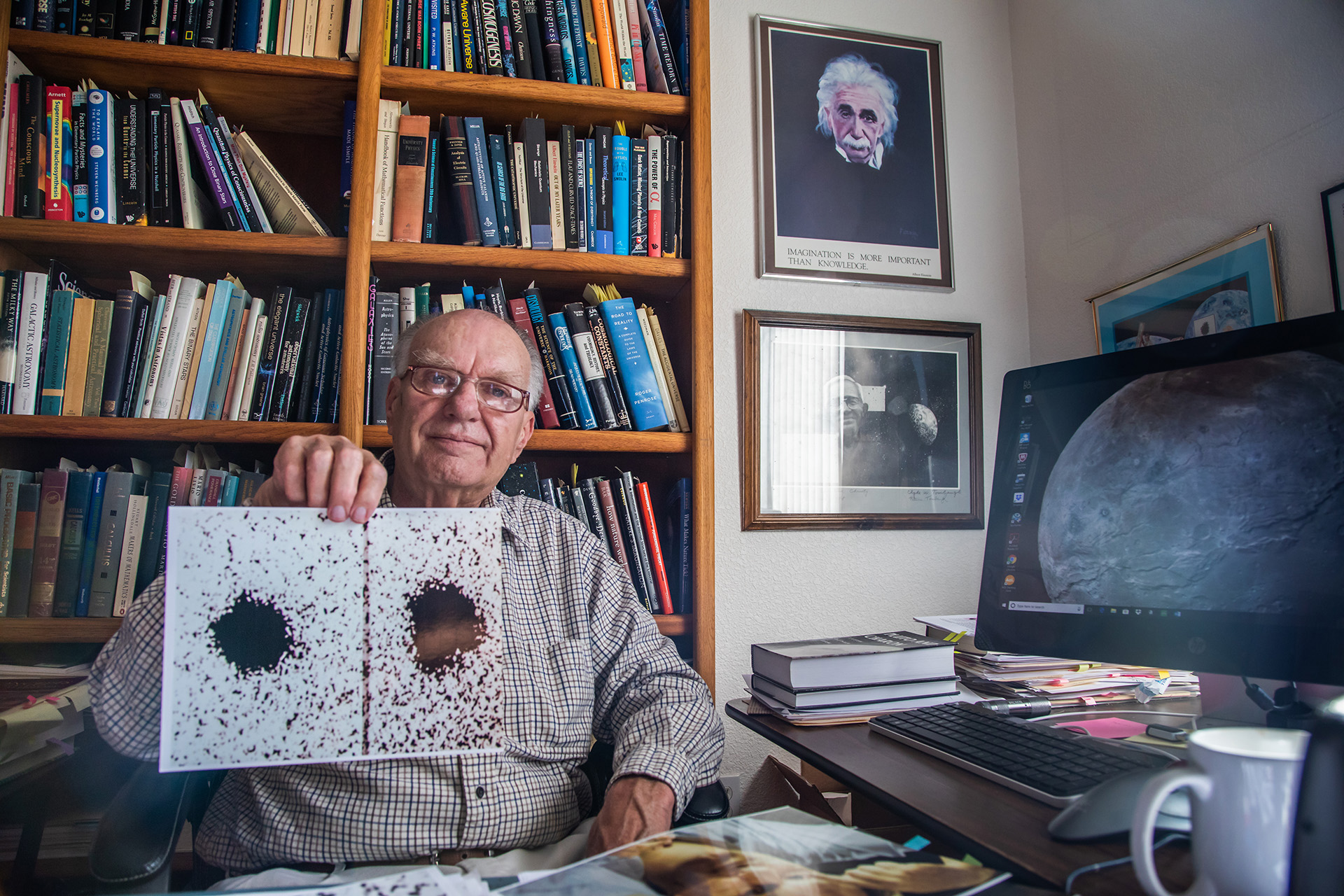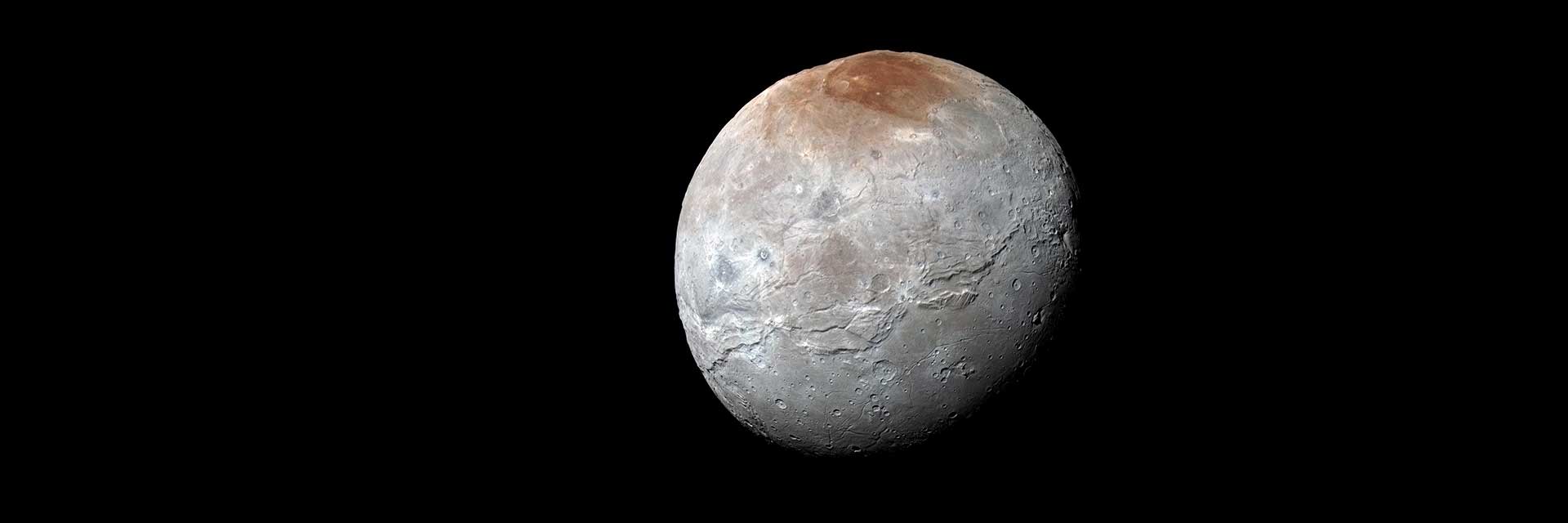Overview
Charon is the largest of Pluto's five moons. At half the size of Pluto, Charon is the largest known satellite relative to its parent body. The same surfaces of Charon and Pluto always face each other, a phenomenon called mutual tidal locking. Charon orbits Pluto every 6.4 Earth days.
In Depth
Charon is 754 miles (1,214 kilometers) across, and Pluto is about 1,400 miles wide. Since Charon is so big compared to Pluto – the two are sometimes referred to as a double dwarf planet system. The distance between them is 12,200 miles (19,640 km).
NASA's New Horizons spacecraft captured images of Charon just before closest approach to Pluto on July 14, 2015. The images showed that Charon's color palette is not as diverse as Pluto's. Most striking is the reddish north (top) polar region.
Charon's orbit around Pluto takes 6.4 Earth days, and one Pluto rotation (a Pluto day) takes 6.4 Earth days. Charon neither rises nor sets, but hovers over the same spot on Pluto's surface, and the same side of Charon always faces Pluto. Compared with most of the planets and moons, the Pluto-Charon system is tipped on its side, like Uranus. Pluto's rotation is retrograde: it rotates backward, from east to west (Uranus and Venus also have retrograde rotations).
Discovery
Charon was discovered in June 1978 by James Christy and Robert Harrington at the U.S. Naval Observatory in Flagstaff, Arizona – about six miles from where Pluto was discovered at the Lowell Observatory. They weren't even looking for moons. They were trying to refine Pluto's orbit around the Sun.

Christy noticed images of Pluto were strangely elongated. The blob seemed to move around Pluto. The direction of elongation cycled back and forth over 6.39 days – Pluto's rotation period. Searching through their archives of Pluto images taken years before, Christy found more cases where Pluto appeared elongated. Additional images confirmed he had discovered the first known moon of Pluto.
How Charon Got its Name
Christy proposed the name Charon after the mythological ferryman who carried souls across the river Acheron, one of the five mythical rivers that surrounded Pluto's underworld. Apart from the mythological connection for this name, Christy chose it because the first four letters also matched the name of his wife, Charlene.





